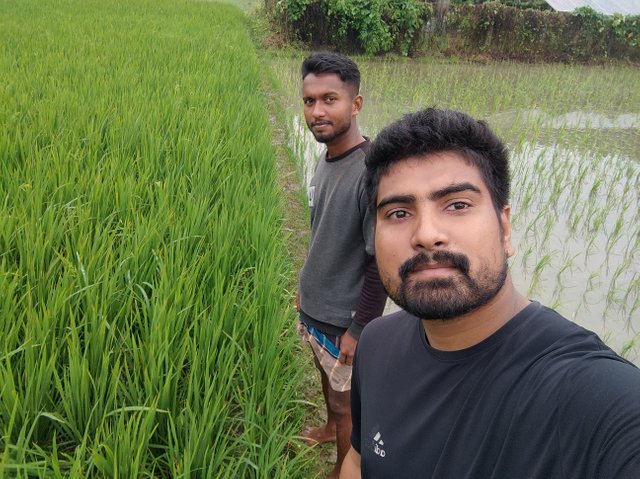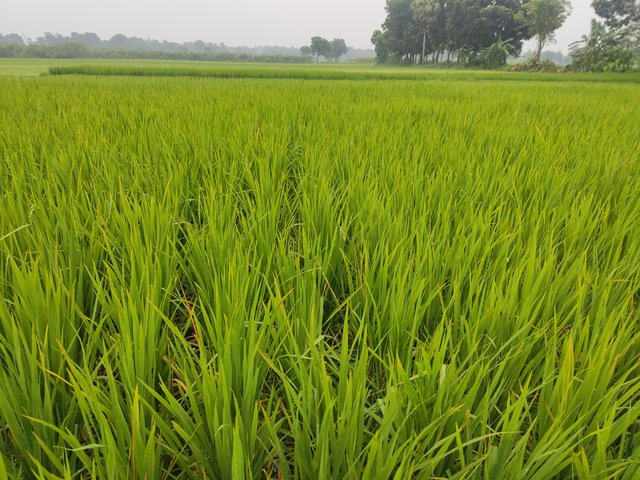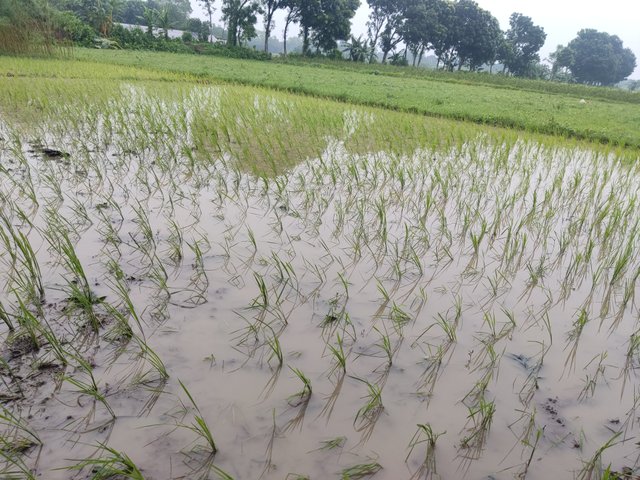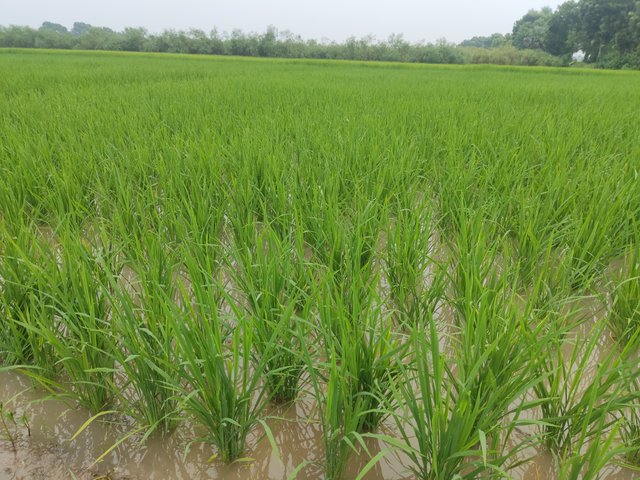"SEC | S20W2: How to cultivate a paddy"
Hello @xkool24 and @mainuna I totally agree with you. Apart from teaching other subjects on this platform, agriculture should not be prioritized, the next generation will really face problems. Many thanks to both of you for highlighting the issue.
I would like to thank you once again for making staple food and rice of different countries of the world the subject of today's training.
.png) |
|---|
Everything I learned in class today: I live in rural areas of Bangladesh. Not most but all the people here are dependent on what. Different types of paddy are cultivated here. I am already aware about the cultivation of paddy to eat AP. Still, it's nice to learn new things from today's class.
From today's class, I learned about the role of rice cultivation in meeting the world's food shortage. I have come to know that rice is the staple food of various countries including Asian continent. I also learned about the famous Kalosar in Indonesia. Also learned more about Indica Rice Outdoors. I am also very excited to know about the various nutritional properties of rice.
After I did this class I went to visit the field with one of my brothers. He cultivates paddy every year. And he is quite experienced about paddy cultivation. I went there and visited the fields, learned how to identify rice pests, and also learned about proper rice cultivation.
 |  |
|---|
 |  |
|---|
What is the method of rice seedbed preparation and what steps are taken in preparing the soil for rice cultivation:
The method of rice seedbed preparation consists of selection of the area to be used for seedbed and the preparation of soil condition to enhance germination. From the International Rice Research Institute the recommended procedure involves providing 100m²/ha for the seedbed and making 18-25kg of quality rice seeds. The surface of the prepared soil mix is then covered with banana leaves or plastic sheets in order to block the bottom layer penetration. The pre-germinated seeds are then placed and sown on the seedbed and watered and the appropriate 2-3 seed thickness maintained.
.png) |
|---|
In preparing the soil for rice cultivation, wet preparation is potential for both upland and lowland fields since it involves tilling in water log condition which needs much water. Some of the common procedures that must be followed in the preparation of the rice paddy are construction of bunds or their repair, levelling the field, application or incorporation of organic manure, ploughing and harrowing as well as provision of irrigation.
.png) |
|---|

What is the importance of planting rice seeds at the right time?:
The choice of time to plant rice seed is very vital to the growth of the plant and the produce to be realized. Some of the key reasons why timing is important include:Some of the key reasons why timing is important include:
- Climate Suitability: Sowing of rice seeds has to be done well before the time when the various climate conditions are likely to be encountered. Rice needs favorable conditions of temperature and moisture for proper germination and growth, and proper time of planting helps it have optimum interaction with the factors at any one time.
- Weed and Pest Management: If planting is done at the right time it enables the rice crop to develop well and also has always advantage over the weeds. Planting when the soils are still warm is beneficial for avoiding competition from weeds while planting when the pest populations are high will lead to higher impact from pests.
- Yield Potential: Crop planting period affects yield potentiality of the rice crop in a given agriculture area. Sowing or planting in early or late months can pose some problems in the growth and development of the crops resulting to low production and poor quality grains.
- Water Management: Irrigation is well managed through out the growing season depending on the planting period/ time. As a planner it assist in scheduling of irrigation especially in situations where water supply is limited or where rainfall is unpredictable.
- Market Considerations: Timing is also something that is effective in planting to market opportunities of a particular kind of plant. Timing of harvest minimises situations in which the crop is ready for sale in the market when the demand is low hence the profit is reduced.
.png) |
|---|
Thus, timing of planting of rice seeds plays a significant role in successful cultivation, practically in all the factors that affect yield potential, controlling pests and weeds, and ultimately proper crop growth and development.

How is regular irrigation and fertilizer applied after sowing rice seeds?
Prior to planting of rice seeds, frequent watering as well as proper application of fertilizers are some of the most important practices required for proper growth of the crop and to obtain the highest possible yield.
Irrigation: It is, therefore, important to pay vital attention to the water regime of the rice fields for optimal support. Whenever planning for planting, it is advised that the field be flooded with about 5 cm of water to enable easy root penetration as well as suppression of weeds. Water management involves irregular movement of water levels depending with the growing stage of the rice throughout the growing period.
Fertilization: When it comes to rice production then the application of fertilizers is very vital because the crop needs nutrients to grow. There are diverse types of organic fertilizer that a farmer can use some of them include green manure cover crops. These fast-growing plants which include legume or grasses are grown and then plowed back to the ground before rice cropping. It becomes beneficial to the rice plant since green manure cover crops assist in additions of organic matter on the ground and nitrogen fixation as well as improving the health of the soil.
.png) |
|---|
A good means through which farmers can enhance good and healthy crop growth to enhance the yields upon planting rice seeds include the right irrigation and fertilization after planting these seeds.

What are the major pests and diseases of rice crops, and how can they be controlled?
Some of the key pests and diseases that harm the rice crops are insects and rats, the diseases that result from bacteria, virus and fungi infections. Some of the pests and diseases affecting rice plant are the rice plant hoppers, stem borers, rice blast disease, sheath blight and bacterial blight. There is, therefore, need to control these pests and disease in order to avoid major set back in the production of the rice crop.
Control methods:
Insects: IPM strategies which can be practiced includes the use in biocontrol agents, resistant varieties of rice and the appropriate use of insecticides where necessary.
Rats: The measures that can be used in effectively controlling rats in rice fields include traps, rodenticides and modifying the environment.
Diseases: This can be practiced through a number of techniques such as crop rotation, use of resistant varieties of rice, sanitation in the field and chemical control by timely application of fungicides.
.png) |
|---|
When these control measures are practiced, most pests and diseases that affect rice crops are reduced hence improving the yields of farmers and health of their crops.

What are the next steps after harvesting the paddy and what are the steps to be taken to preserve the paddy?
Certain post-harvest factors are important to improve rice quality and prevent spoilage after harvest. Here is a detailed discussion:
Post-Harvest Steps:
Reaping: Mowing the entire plant above the ground, including the mature panicles and straw. These may be done through human power, or by mechanical means such as through an assembly line.
Threshing: The process of paddy cleaning entails the process of sorting out the grain from the other parts of the cut crop. This can be done by hand, using a treadle thresher or by using mechanical threshers which include mechanical, pneumatic, and combine type.
Cleaning: To enhance the quality as well as the storage of the grain eliminating the immature, the unfilled and the non-grain materials.
Hauling: Moving the cut crop to the point where threshing will be done.
Drying: A process of regulating the moisture content of the paddy to a level that is safe for storage in order to eliminate chances of spoilt paddy. This can be done through sun drying or use mechanical dryer at various controlled temperatures.
Preservation Steps:
Proper Drying: Check that the paddy is dried to the optimum moisture content that will in turn discourage mold formation and spoiling of the produce.
Clean Storage Environment: Timely removal of pests as well as proper cleaning of that area of the store that is used for storing them. Some of the existing recommendations that need to be taken into account include the following.
Temperature Control: Molding the paddy to ensure that no heat accumulates since this is likely to result to spoilage.
Pest Control: A process of excluding pests from the paddy by applying pest control measures such as fumigation or using natural repellents which include .
Regular Monitoring: Examining the stored paddy from time to time in order to determine if it has gone bad or infested with pest before opting for its use.
.png) |
|---|
Through these processes, I can help maintain the quality of the rice before the time it undergoes further processing or is ready for marketing.

Invite: @ripon0630 @mahadiselim @mostofajaman
I invite you to support @pennsif.witness for growth across the whole platform through robust communication at all levels and targeted high-yield developments with the resources available.
 Click Here
Click Here Thanks for reading the Post
19/09/2024
The End |
|---|

X promote link : https://x.com/Shahari73599011/status/1836685345561415747
Upvoted. Thank You for sending some of your rewards to @null. It will make Steem stronger.
He has shown the process of rice cultivation very well. It will definitely be helpful for paddy farmers. Thanks for your post!
💯⚜2️⃣0️⃣2️⃣4️⃣ This is a manual curation from the @tipu Curation Project.
@tipu curate
Upvoted 👌 (Mana: 6/8) Get profit votes with @tipU :)